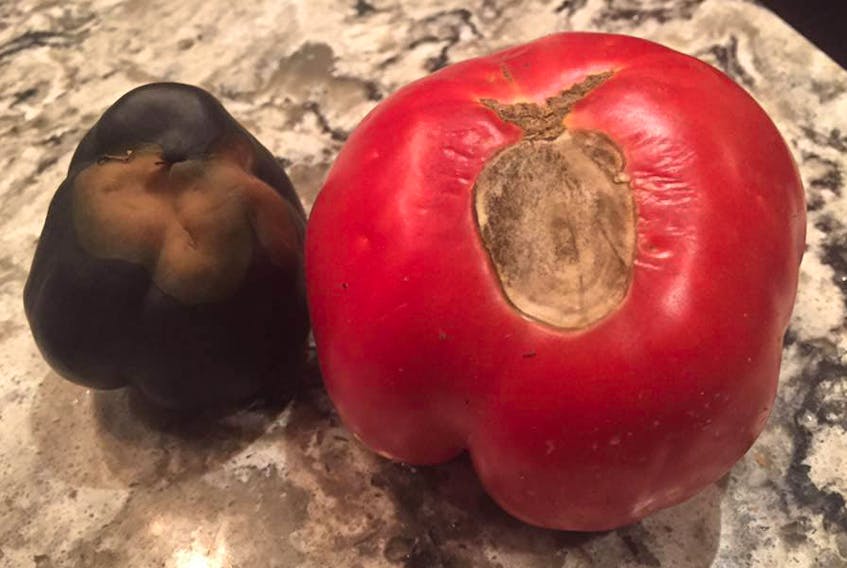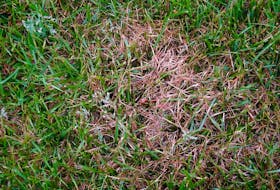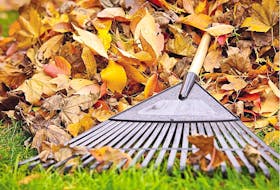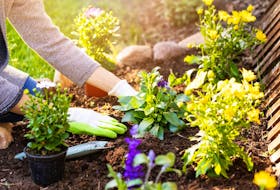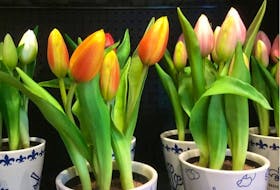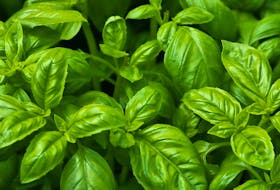It’s that time again! It’s officially the right temperatures to get out and start planting in the garden ... sort of.
Victoria Day weekend has come and gone and the nighttime temperatures are still kind of chilly for plants like tomatoes. So if you are a gardener and tomatoes are your plant of choice for your plot of land or your raised beds, here are a few things you can do now to help them avoid a common problem in our area.
I am always being asked about the black spot on the bottom of the home-grown tomatoes. It is called blossom end rot. This happens when a green or a ripened tomato gets a sunken leathery patch on the bottom. Blossom end rot (BER) occurs because of a calcium imbalance. Tomatoes use calcium to grow. It acts as the binding agent, which holds them all together. If you plant a tomato in the same spot every year, it will eventually remove all of the available calcium from the soil. It is important to note that a tomato absorbs calcium through water and this is a slow process for the plant. If they grow too quickly, they can’t get enough calcium from the soil into the plant, often causing BER. (When we use fertilizer that is high in nitrogen and low in calcium, we contribute to this rapid growth.)
So how do you avoid it? Patience is key and also the hardest thing for most gardeners to apply to their plants. Don’t put the tomatoes in the ground until nighttime temperatures are consistently above 10 degrees Celsius. Cold soil at night and then warm temperatures during the day creates growth spurts in the plant. You want consistency so that you get even growth throughout the day. Avoid using nitrogen-rich fertilizers. We now know that excessive nitrogen in the soil inhibits the absorption of calcium. Instead, feed your plants compost and work it into the soil before you plant your seedling in the ground.
Here are a few other things that you can do now to help your tomatoes when it’s actually time to plant.
-Select an area with good drainage. If you are using a container, make sure that it has a hole in the bottom. Tomatoes will not tolerate standing in water, nor do they ever want to dry out.
-Consistent watering is really important too. Tomatoes need one to three inches of water per week. Ideally a deep watering (where you leave the hose on them for a few minutes) every few days instead of a light watering every morning.
-Once the flowers start to emerge, apply a fertilizer that has a high middle number, like a 4-12-4. The phosphorous (middle number) promotes healthy root growth.
If you start getting BER on your tomatoes, you need to get them a quick shot of calcium for your plants. The easiest way is to pick up a bag of limestone screenings from the box or outdoor supply store. Mix three to four handfuls of stone with a gallon of water to get a milky white mixture. Apply a couple of cups to each plant for three days in a row. This will go a long way to reducing the acid in the soil and adding more calcium to the roots of your plants in a way they can absorb it.
Carson Arthur is an international landscape designer and media personality with a focus on environmentally friendly design and low maintenance outdoor rooms.

